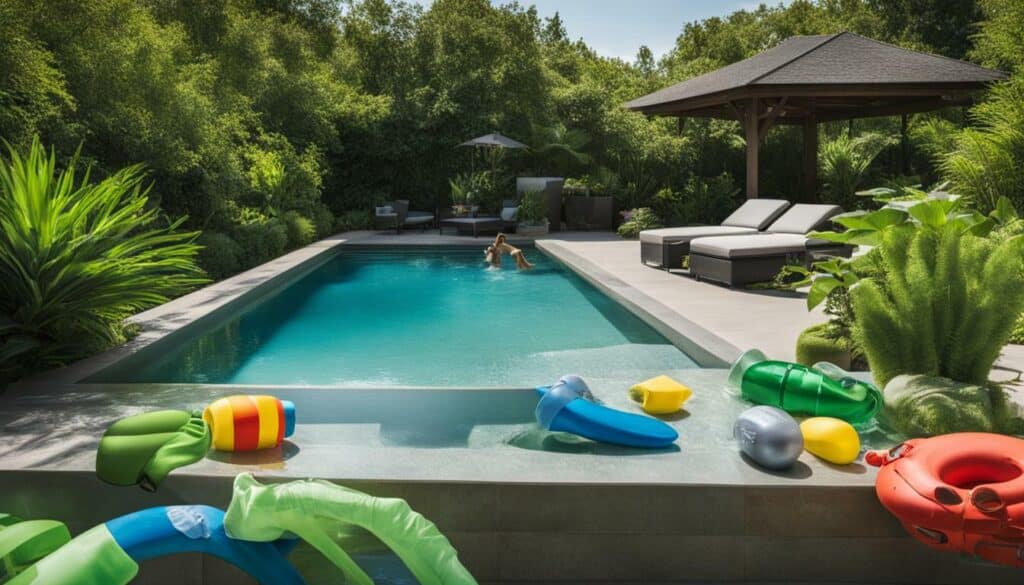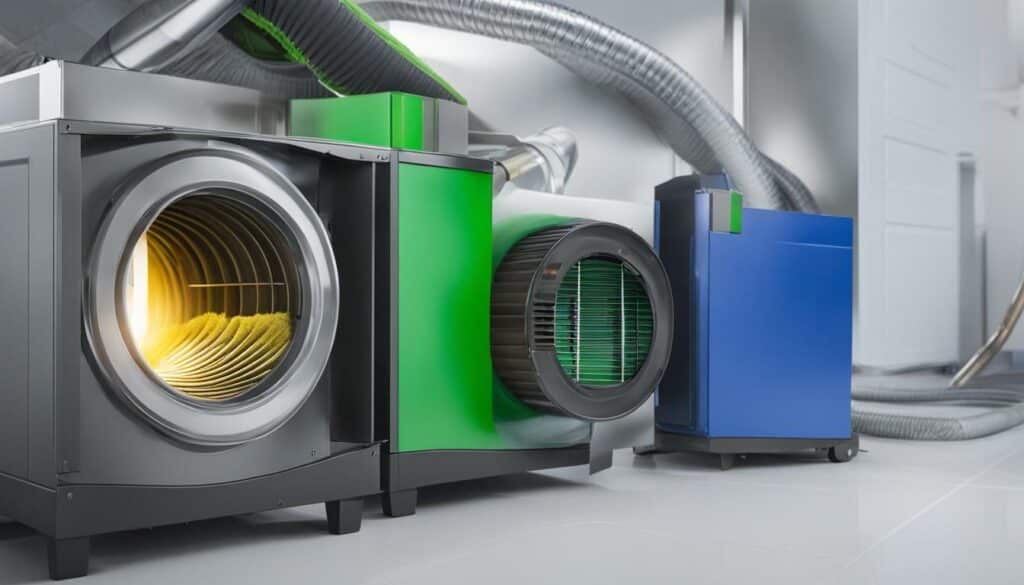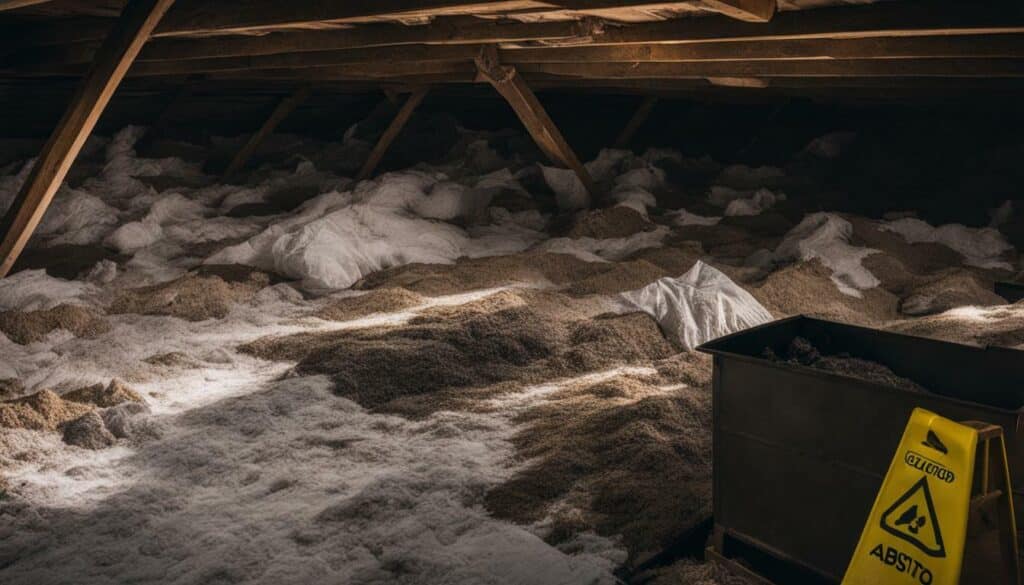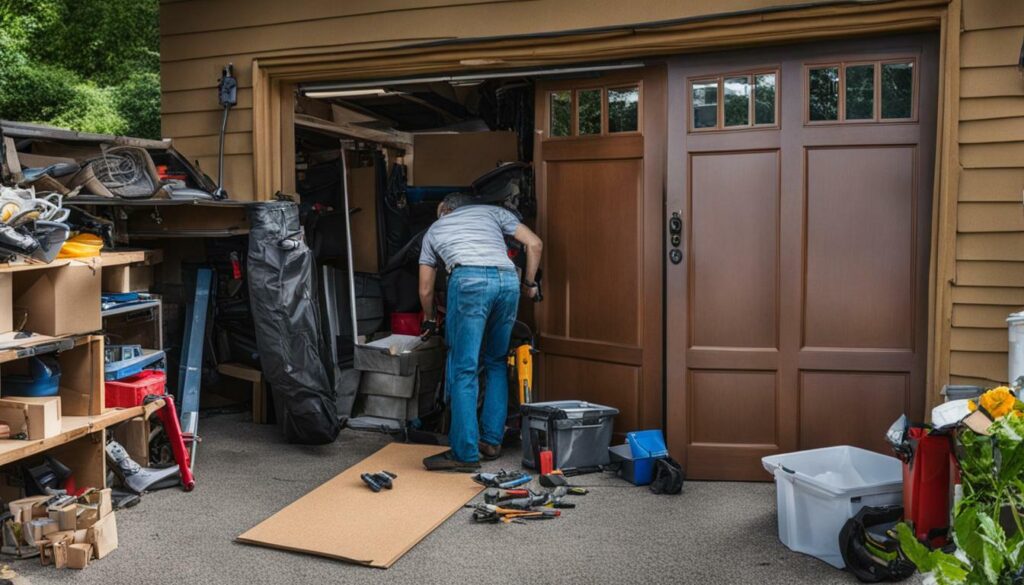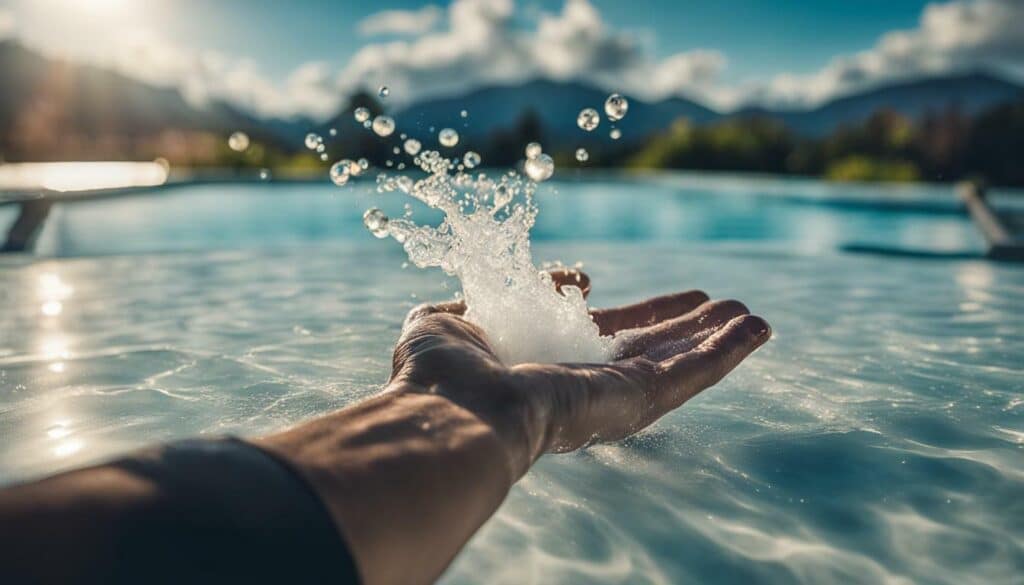
Are you unsure about how to shock a salt water pool? Follow these easy steps to keep your pool in perfect condition.
Shocking a saltwater pool is an essential part of its maintenance. Even though saltwater pools use a salt chlorine generator, regular shock treatments are still necessary to eliminate contaminants and algae. By following these steps, you can ensure the cleanliness and longevity of your pool.
Before shocking your pool, it is crucial to clean it thoroughly. Remove any debris, brush the walls and floor, and empty the skimmer and pump baskets. Next, test and adjust the pH, alkalinity, and calcium hardness levels to ensure proper water balance.
Now, it’s time to choose the right shock product for your salt water pool. Non-cal hypo shock or dichlor are recommended options. They are specifically designed for salt water pools and provide effective results.
Calculating the correct shock dosage is crucial to ensure the effectiveness of the treatment. Follow the manufacturer’s instructions and calculate the dosage based on your pool’s volume. Accuracy is key to achieving the desired results.
When applying the shock treatment, dilute it in a 5-gallon bucket of water and pour it slowly around the edges of the pool. This will help distribute the shock evenly throughout the pool.
After about 6 hours, test the chlorine levels using a pool test kit. Ensure that the levels are within the recommended range. To complete the process, run the pool filter for at least 6 hours to ensure proper dispersion of the shock treatment.
Remember, shocking your salt water pool should be done regularly. It is recommended to shock the pool once a week, as part of your routine maintenance. Additionally, consider shocking the pool after extreme weather events or big pool parties.
Key Takeaways:
- Regularly shocking a salt water pool is crucial for keeping it clean and free of contaminants.
- Clean the pool thoroughly and balance its chemistry before applying the shock treatment.
- Choose the right shock product specifically designed for salt water pools.
- Calculate the correct shock dosage based on your pool’s volume.
- Dilute the shock treatment in a 5-gallon bucket and pour it slowly around the edges of the pool for even distribution.
- Test the chlorine levels after 6 hours and run the pool filter to ensure proper dispersion of the shock treatment.
- Shocking a salt water pool should be done once a week, and after extreme weather events or big pool parties.
Why is Shocking a Salt Water Pool Important?
Regularly shocking your salt water pool is crucial for its maintenance and overall cleanliness. While salt water pools utilize a salt chlorine generator to produce chlorine, shock treatments are still necessary to eliminate contaminants and algae that may accumulate over time. Shocking the pool helps to oxidize and kill organic matter, such as sweat, sunscreen, and bacteria, ensuring that the water remains clear and safe for swimming.
Without regular shock treatments, chloramines can build up in the pool, causing an unpleasant odor and potentially irritating swimmers’ eyes and skin. Additionally, inadequate shock treatments can lead to algae growth, turning the pool water green and creating a breeding ground for bacteria and other harmful microorganisms. By regularly shocking your salt water pool, you maintain a healthy and inviting swimming environment for your family and friends.
Remember, a well-shocked salt water pool is not just about aesthetics but also about the health and safety of swimmers. So, make sure to include shock treatments as part of your pool maintenance routine.
To maintain the cleanliness and longevity of your salt water pool, it is recommended to shock it once a week. However, certain circumstances may require more frequent shock treatments. For instance, after heavy rainfall, extreme weather events, or when the pool has been used for a big party, extra shock treatments are necessary to restore the pool’s chemical balance and eliminate any potential contaminants.
Now that you understand the importance of shocking a salt water pool, it’s time to learn about the specific steps and procedures involved. In the next section, we will explore when and how often you should shock your salt water pool, ensuring that you maintain a clean and inviting swimming environment for everyone to enjoy.
When and How Often Should You Shock Your Salt Water Pool?
Wondering how often you should shock your salt water pool? Here’s a helpful guide to determine the right frequency. Shocking a salt water pool is an essential part of its maintenance, as it helps to eliminate contaminants and algae, ensuring a clean and safe swimming environment.
As a general rule, it is recommended to shock your salt water pool once a week as part of your regular maintenance routine. Regular shock treatments help to prevent the buildup of chloramines, which can cause skin and eye irritation. Additionally, shocked pools are less likely to develop algae blooms, keeping the water clear and inviting.
However, there are certain circumstances that may require more frequent shock treatments. After heavy rainfall or a big pool party, for example, it is a good practice to shock the pool to remove any contaminants that may have been introduced. Extreme weather events, such as storms or heatwaves, can also affect the pool’s chemistry and warrant an additional shock treatment.
Remember to always test your water before shocking to ensure proper chemistry balance. Use a reliable water testing kit to measure pH, alkalinity, and calcium hardness levels. Adjust these levels if necessary before adding the shock treatment to achieve optimal results.
By following a regular shock routine and addressing any specific needs as they arise, you can maintain a sparkling and healthy salt water pool all season long. Keep your pool clean, clear, and inviting for you and your loved ones to enjoy!
| When to Shock Your Salt Water Pool | How Often to Shock Your Salt Water Pool |
|---|---|
| Once a week as part of regular maintenance | At least once a week |
| After heavy rainfall or big pool parties | Additional shock treatment may be required |
| After extreme weather events | Monitor pool chemistry and shock as needed |
Regular shock treatments help to prevent the buildup of chloramines, which can cause skin and eye irritation. Additionally, shocked pools are less likely to develop algae blooms, keeping the water clear and inviting.
Preparing Your Pool for Shocking
Before shocking your salt water pool, it’s essential to prepare it by taking a few necessary steps. Proper preparation ensures that the shock treatment is effective in eliminating contaminants and maintaining the cleanliness of your pool. Here are some important tasks to complete before shocking:
- Clean the pool: Remove any debris or leaves from the pool using a skimmer net or vacuum. This step ensures that the shock treatment can work efficiently without any obstructions.
- Test and adjust the pool chemistry: Use a pool testing kit to check the pH, alkalinity, and calcium hardness levels of your pool. Adjust these levels if necessary to create a balanced environment for the shock treatment to work effectively.
- Balance the chlorine levels: Make sure the chlorine levels are within the recommended range before shocking. This ensures that the shock treatment can work optimally without any interference.
By completing these preparations, you are ensuring that your pool is ready to receive the shock treatment. This sets the foundation for a successful and thorough cleaning process.
“Proper preparation before shocking your salt water pool is crucial for effective results. By cleaning the pool, testing and adjusting the chemistry, and balancing the chlorine levels, you are setting the stage for a successful shock treatment.”
Remember, the cleanliness and maintenance of your salt water pool are essential for the health and enjoyment of swimmers. By following these preparation steps, you are ensuring that your pool remains in optimal condition and that the shock treatment is effective in eliminating contaminants. Make it a regular part of your maintenance routine, and your pool will thank you with sparkling, crystal-clear water.
Pool Shocking Preparation Checklist:
| Steps | Description |
|---|---|
| Clean the pool | Remove debris and leaves from the pool using a skimmer net or vacuum. |
| Test and adjust the pool chemistry | Check the pH, alkalinity, and calcium hardness levels of the pool using a testing kit. Adjust the levels if necessary. |
| Balance the chlorine levels | Ensure the chlorine levels are within the recommended range before shocking the pool. |
Now that your pool is prepared, it’s time to move on to the next step: choosing the right shock product for your salt water pool.
Choosing the Right Shock Product for a Salt Water Pool
Selecting the right shock product is crucial for effectively treating a salt water pool. Here’s what you need to know.
When it comes to choosing the best shock product for your salt water pool, two options stand out: non-cal hypo shock and dichlor. Non-cal hypo shock, also known as calcium hypochlorite shock, is a popular choice due to its high chlorine content. It dissolves quickly and effectively eliminates contaminants and algae. On the other hand, dichlor shock is a stabilized form of chlorine that also contains cyanuric acid. It provides a slower release of chlorine, making it ideal for regular maintenance and preventing chlorine loss due to sunlight.
To help you make an informed decision, here’s a comparison table highlighting the key features of both shock products:
| Shock Product | Chlorine Content | Dissolves Quickly | Stabilized | Recommended Usage |
|---|---|---|---|---|
| Non-Cal Hypo Shock | High chlorine content | Yes | No | For shock treatments and eliminating contaminants |
| Dichlor Shock | Stabilized chlorine | Slower release | Yes (contains cyanuric acid) | Regular maintenance and preventing chlorine loss |
Both non-cal hypo shock and dichlor are effective options for shocking a salt water pool. The choice depends on your specific needs and preferences. If you’re looking for a quick solution to eliminate contaminants or algae, non-cal hypo shock is a great choice. However, if you want to maintain a steady chlorine level and protect against chlorine loss, dichlor shock may be more suitable.
Remember, always follow the manufacturer’s instructions and dosage recommendations when using shock products. This will ensure safe and effective treatment for your salt water pool.
Calculating the Shock Dosage for Your Pool
Properly calculating the shock dosage is essential to ensure optimal results when treating a salt water pool. The correct amount of shock to use depends on the volume of your pool, which can be calculated using a simple formula. First, measure the length, width, and average depth of your pool in feet. Multiply these three measurements together to obtain the total cubic feet of your pool. Next, multiply this number by 7.5 to convert cubic feet to gallons. This will give you the total volume of your pool in gallons, which you will use to determine the appropriate shock dosage.
When it comes to shock treatments, it’s important to follow the manufacturer’s instructions for dosage recommendations. As a general rule of thumb, you should use one pound of shock per 10,000 gallons of water to increase the chlorine level by 1 ppm (parts per million). For example, if your pool has a volume of 20,000 gallons and you want to raise the chlorine level by 2 ppm, you would need to add two pounds of shock.
It’s important to note that shock treatments can vary depending on the specific brand and product you are using. Some shock treatments may require pre-dissolving in a bucket of water before adding it to the pool, while others can be added directly to the pool. Always read and follow the instructions provided with the shock product to ensure proper usage and effectiveness.
| Chlorine Level Increase (ppm) | Pool Volume (gallons) | Shock Dosage (pounds) |
|---|---|---|
| 1 ppm | 10,000 | 1 |
| 2 ppm | 20,000 | 2 |
| 3 ppm | 30,000 | 3 |
Remember, maintaining proper chlorine levels in your pool is crucial for safe and healthy swimming conditions. However, it’s important to avoid over-shocking your pool, as excessive chlorine levels can cause skin and eye irritation. Always test the chlorine levels after adding shock treatment and adjust if necessary. Additionally, avoid swimming immediately after shocking your pool and wait until the chlorine levels have returned to the recommended range.
By accurately calculating the shock dosage for your pool and following the proper procedures, you can ensure that your salt water pool remains clean, clear, and safe for swimming enjoyment.
Applying the Shock Treatment
Applying the shock treatment correctly is key to effectively treating a saltwater pool. Here’s how to do it right.
- Start by diluting the shock product in a 5-gallon bucket of water. This helps to ensure even distribution of the shock throughout the pool.
- Slowly pour the diluted shock solution around the edges of the pool. This method allows the shock to mix with the pool water more effectively.
- Take caution not to splash the shock solution onto yourself or others, as it may cause skin and eye irritation.
- After adding the shock treatment, it’s important to run the pool filter for at least 6 hours. This helps to circulate the shock throughout the pool, ensuring proper dispersion.
Remember, shocking your saltwater pool should be done when there are signs of chloramines, algae, or contaminants. It’s also a good practice to shock the pool after extreme weather events or big pool parties. By following these steps, you can maintain the cleanliness and longevity of your saltwater pool.
| Pool Volume (in gallons) | Shock Dosage (in pounds) |
|---|---|
| 5,000 | 1 |
| 10,000 | 2 |
| 15,000 | 3 |
When applying the shock treatment, always follow the manufacturer’s instructions and recommended dosage for your specific pool volume. Maintaining proper shock treatment is essential for the health of your pool and the swimmers who enjoy it.
Balancing the Pool Chemistry After Shocking
Balancing the pool chemistry is crucial after shocking a salt water pool to maintain its optimal condition. Shock treatments raise the chlorine levels significantly, which can disrupt the balance of other chemicals in the pool. To ensure the water remains safe and comfortable for swimmers, it is important to test and adjust the pool chemistry after shocking.
First, test the chlorine level using a reliable pool testing kit. The ideal range for chlorine in a salt water pool is between 1-3 parts per million (ppm). If the chlorine level is too high, the water can become irritating to the eyes and skin. If the chlorine level is too low, there may not be enough sanitation to keep the pool clean.
If the chlorine level is too high, you can lower it by adding a chlorine neutralizer or allowing the chlorine level to naturally decrease over time. If the chlorine level is too low, you can add a chlorine stabilizer or shock the pool again with the appropriate dosage. It is important to follow the instructions on the pool shock product regarding dosage and waiting time before retesting the water.
Table 1: Recommended Pool Chemistry Levels After Shocking
| Chemical | Ideal Range |
|---|---|
| Chlorine | 1-3 ppm |
| pH | 7.2-7.6 |
| Alkalinity | 80-120 ppm |
| Calcium Hardness | 200-400 ppm |
In addition to chlorine, it is important to maintain proper pH, alkalinity, and calcium hardness levels. The recommended pH range for a salt water pool is between 7.2-7.6. If the pH is too high, you can lower it by adding an acid such as muriatic acid or sodium bisulfate. If the pH is too low, you can raise it by adding a pH increaser.
The alkalinity level in a salt water pool should be between 80-120 ppm. Alkalinity acts as a buffer, preventing rapid changes in pH. If the alkalinity is too high, you can lower it by adding an alkalinity reducer such as sodium bisulfate. If the alkalinity is too low, you can raise it by adding an alkalinity increaser.
The calcium hardness level should be maintained between 200-400 ppm. This helps prevent corrosion of pool equipment and surfaces. If the calcium hardness is too low, you can raise it by adding a calcium hardness increaser. If the calcium hardness is too high, you can lower it by diluting the pool water or adding a calcium hardness reducer.
By regularly testing and adjusting the pool chemistry, you can ensure that your salt water pool remains clean, safe, and enjoyable for swimming. Remember to refer to the manufacturer’s instructions for any pool chemicals and always follow proper safety precautions.
By following these easy steps and guidelines, you can effectively shock your salt water pool and ensure its cleanliness and longevity. Shocking a saltwater pool is an essential part of its maintenance, as it helps to eliminate contaminants and algae. While saltwater pools use a salt chlorine generator to convert salt into chlorine, they still need to be shocked regularly to ensure cleanliness.
It is recommended to shock a saltwater pool once a week as part of the regular maintenance routine. Before shocking, it is important to clean the pool and balance its chemistry by testing and adjusting the pH, alkalinity, and calcium hardness levels. The correct shock product to use for saltwater pools is non-cal hypo shock or dichlor. The dosage should be calculated based on the pool volume.
When adding the shock treatment, it is best to dilute it in a 5-gallon bucket and pour it slowly around the edges of the pool. After about 6 hours, the chemistry should be balanced again by testing the chlorine levels. It is important to run the pool filter for at least 6 hours after shocking to ensure the shock is dispersed throughout the pool. While saltwater chlorinators have a super-chlorination option, it is not as effective as using traditional shock treatments and can overwork the motor. Therefore, it is recommended to use dichlor or non-chlorine shock for saltwater pools.
Shocking a saltwater pool should be done when there are signs of chloramines, algae, or contaminants in the pool. It is also good practice to shock the pool after extreme weather events or big pool parties. By following these steps and maintaining regular shock treatments, you can enjoy a clean and healthy salt water pool for years to come.
FAQ
Why is it necessary to shock a saltwater pool?
Shocking a saltwater pool is essential to eliminate contaminants and algae, ensuring cleanliness and proper maintenance.
How often should I shock my saltwater pool?
It is recommended to shock a saltwater pool once a week as part of the regular maintenance routine.
What preparations should be done before shocking a saltwater pool?
Before shocking, it is important to clean the pool and balance its chemistry by testing and adjusting the pH, alkalinity, and calcium hardness levels.
What is the correct shock product to use for saltwater pools?
The recommended shock products for saltwater pools are non-cal hypo shock or dichlor.
How do I calculate the shock dosage for my saltwater pool?
The shock dosage should be calculated based on the pool volume, following the instructions provided for the specific shock product being used.
How should I apply the shock treatment to my saltwater pool?
It is best to dilute the shock product in a 5-gallon bucket and pour it slowly around the edges of the pool.
How do I balance the pool chemistry after shocking?
After about 6 hours, the pool chemistry should be balanced again by testing the chlorine levels and running the pool filter for at least 6 hours.
Can I use the super-chlorination option on my saltwater chlorinator instead of a traditional shock treatment?
While saltwater chlorinators have a super-chlorination option, it is not as effective as using traditional shock treatments and can overwork the motor. It is recommended to use dichlor or non-chlorine shock for saltwater pools.
When should I shock my saltwater pool?
It is advised to shock the pool when there are signs of chloramines, algae, or contaminants present, as well as after extreme weather events or big pool parties.



